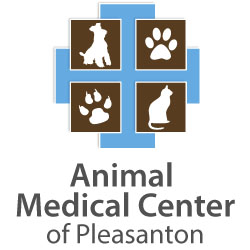Bringing Home a Puppy: Tips for New Pet Owners
Bringing Home a Puppy: Tips for New Pet Owners Bringing home a new puppy is an exciting time for your family, but it also comes with responsibilities. At Animal Medical Center of Pleasanton, we’re here to help you prepare for your new furry family member and ensure a smooth transition. Prepare Your Home Before your puppy arrives, make sure your home is safe and welcoming: Puppy-Proofing: Remove hazards like electrical cords, toxic plants, and small objects that could be swallowed. Designate a Space: Set up a cozy area with a bed, toys, and food and water bowls. Stock Up on Supplies: Purchase essentials like a collar, leash, crate, and puppy food.
Pyometra in Dogs: Symptoms, Risks & Treatment
Pyometra in Dogs: Symptoms, Risks, and Treatment Pyometra is a serious and potentially life-threatening uterine infection that affects unspayed female dogs. At Animal Medical Center of Pleasanton, we’re here to help you understand this condition and provide the best care for your pet. What Is Pyometra? Pyometra is an infection of the uterus that typically occurs in older, unspayed female dogs. It can develop after a heat cycle when hormonal changes make the uterus more susceptible to bacterial infection. Types of Pyometra There are two main types of pyometra: Open Pyometra: The cervix remains open, allowing pus to drain from the uterus. This type is easier to detect due to visible
Megaesophagus in Dogs and Cats: Causes & Care
Megaesophagus in Dogs and Cats: Causes, Symptoms, and Care Megaesophagus is a condition that affects the esophagus, making it difficult for pets to swallow food and water properly. At Animal Medical Center of Pleasanton, we’re here to help you understand this condition and provide the best care for your furry friend. What Is Megaesophagus? Megaesophagus is a disorder where the esophagus loses its ability to move food and water to the stomach. This can lead to regurgitation, malnutrition, and other complications. Causes of Megaesophagus The condition can be congenital (present at birth) or acquired later in life. Common causes include: Congenital Defects: Some pets are born with an underdeveloped esophagus. Neuromuscular
10 Tips for Traveling with Dogs and Cats
10 Simple Tips for Traveling with Dogs and Cats Traveling with your pets can be a fun and rewarding experience, but it requires careful planning to ensure their safety and comfort. Whether you’re taking a road trip or flying to a new destination, Animal Medical Center of Pleasanton is here to help. Follow these 10 simple tips to make your journey stress-free for both you and your furry friends. 1. Plan Ahead Before hitting the road or booking a flight, research pet-friendly accommodations, airlines, and transportation options. Make sure your pet meets all travel requirements, such as vaccinations and health certificates. 2. Visit the Vet Schedule a check-up with your veterinarian at Animal
Why Does My Dog Eat Rocks? What You Need to Know
Why Does My Dog Eat Rocks? What You Need to Know If you’ve ever caught your dog chewing or swallowing rocks, you’re not alone. This behavior, known as pica, can be both puzzling and dangerous. At Animal Medical Center of Pleasanton, we’re here to help you understand why dogs eat rocks and what you can do to keep your furry friend safe. Why Do Dogs Eat Rocks? Dogs may eat rocks for a variety of reasons, including: Curiosity: Puppies, in particular, explore the world with their mouths. Boredom: A lack of mental or physical stimulation can lead to destructive behaviors. Nutritional Deficiencies: In some cases, dogs may eat non-food items due to
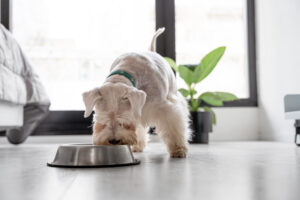
Pumpkin for Pets: Fall’s Nutritional Superfood
Pumpkin for Pets: Fall’s Nutritional Superfood As the leaves change and the air turns crisp, pumpkin becomes a staple of fall flavors. But did you know that pumpkin is also a nutritional superfood for your pets? Packed with vitamins, minerals, and fiber, pumpkin offers a variety of health benefits for dogs and cats. In this blog, we’ll explore why pumpkin is a great addition to your pet’s diet and how to incorporate it safely. Health Benefits of Pumpkin for Pets Digestive Health: Pumpkin is rich in fiber, which can help regulate your pet’s digestion. It’s particularly useful for addressing both constipation and diarrhea. Weight Management: Low in calories and high

Holiday Pet Safety: 10 Tips to Keep Your Pets Safe
Festive Fun Without the Furry Fiascos: A Guide to Holiday Pet Safety The holiday season is a magical time filled with joy, celebrations, and gatherings. As we decorate our homes, plan festive feasts, and exchange gifts, it’s essential to remember that our furry family members need extra attention to ensure they have a safe and happy holiday too. In this blog, we’ll explore 10 holiday pet safety tips to keep your pets healthy and happy during the festivities. 1. Decorate with Care Festive decorations can be appealing to pets but also pose various dangers. Keep ornaments, tinsel, and other small decorations out of your pet’s reach to prevent choking hazards or gastrointestinal
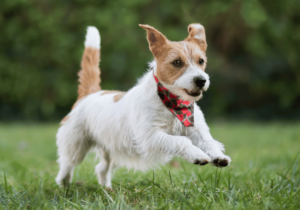
Spring Allergies in Pets: Signs & Solutions
How to Spot Spring Allergies in Your Furry Friends Spring is a time of renewal and beauty, but it can also bring challenges for our pets. Just like humans, dogs and cats can suffer from seasonal allergies, and it’s important to recognize the signs to ensure their well-being. Common Signs of Allergies in Pets Excessive Itching and Scratching: If your pet is scratching more than usual, especially around their paws, ears, or belly, it could be a sign of allergies. Skin Issues: Redness, rashes, or hair loss may indicate an allergic reaction. Sneezing and Runny Nose: Like us, pets can sneeze or have a runny nose due to allergens. Watery

Find the Best Dog Chiropractor Near | Ultimate Guide
The Ultimate Guide to Finding the Best Dog Chiropractor In a world where our furry companions are cherished members of the family, ensuring their well-being is a top priority. Finding the best dog chiropractor near you can be a game-changer in your pet’s health and happiness. From soothing joint pain to improving mobility, these skilled professionals can work wonders for your canine friend. You want the very best for your dog, and that means finding a chiropractor who not only has the expertise but also a genuine love for animals. In this comprehensive guide, we’ll walk you through the essential steps to locating the perfect practitioner for your pup. Whether
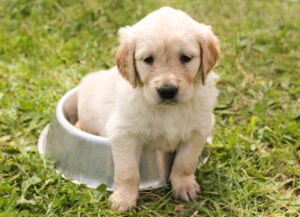
Potty Training Puppies: Expert Guide for a Clean, Happy Home
Mastering the Art of Potty Training: A Guide to Happy and Clean Puppies Are you tired of coming home to messy accidents and smelly surprises from your furry friend? Say goodbye to the endless cleanup and frustration by mastering the art of potty training with our comprehensive guide. “Mastering the Art of Potty Training: A Guide to Happy and Clean Puppies” is your go-to resource for transforming your pup into a clean and well-behaved companion. Whether you’re a first-time pet parent or looking to improve your current training methods, this guide offers expert tips and strategies to make the potty training process smooth and stress-free. From establishing a routine to
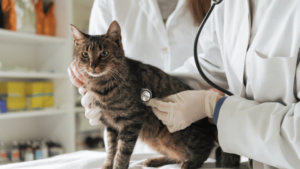
Preparing for Your Cat’s Vet Visit: A Helpful Checklist
Preparing for Your Cat’s Vet Visit: A Helpful Checklist A successful vet visit for your cat starts with proper preparation. Here’s a detailed checklist to ensure your cat feels comfortable and secure during their visit to Animal Medical Center of Pleasanton: Include a Familiar Blanket: Emotional Comfort: A soft, familiar blanket can create a soothing environment for your cat, helping to ease nerves during the doctor visit. Familiar Scent: Using bedding that carries your scent will remind your cat of home, providing additional comfort. Familiarize the Carrier: Create a Positive Association: Leave the carrier accessible days in advance. Place treats and toys inside, encouraging your cat to see the carrier as

Extreme Cold Weather Safety Tips for Pets
Extreme Cold Weather Safety Tips for Pets As extreme cold weather looms, here are important tips to keep your pets safe: Assess Cold Tolerance: Understand your pet’s breed and coat type to determine their ability to handle cold. Limit Walks: Shorten outdoor activities during extreme cold; restrict time outdoors to essential bathroom breaks. Booties for Protection: Consider investing in pet booties; ensure they fit well. Clean your dog’s paws after walks if booties aren’t an option. Pet-Safe De-Icers: Use only de-icing solutions that are safe for animals to prevent chemical exposure. Antifreeze Precautions: Be vigilant about antifreeze spills; immediately clean any messes as they are life-threatening to pets. Hypothermia Awareness:

Plan of Action for Pet Safety in Case of Fire
Plan of Action for Pet Safety in Case of Fire Protecting our beloved pets during emergencies like fires requires careful planning. Here’s an expanded action plan tailored for you: Prepare an Emergency Kit: Essential Supplies: Stock up on a week’s supply of food, water, and any medications your pets may need. First Aid Kit: Include basic first aid supplies specifically for pets, like antiseptic wipes, bandages, and any special items your pet may require. Comfort Items: Add a favorite toy or blanket to help soothe your pet during stressful times. Develop an Evacuation Plan: Identify Safe Exits: Determine two exits from each room in your home, ensuring your plan is
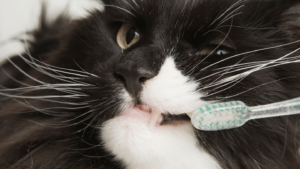
February Dental Month for Cats
February Dental Month for Cats: Why Dental Care Matters February is Cat Dental Month—the perfect opportunity to focus on your feline friend’s dental health. Here’s how you can maintain their oral hygiene and our role in supporting you. Importance of Dental Care Dental hygiene is essential for preventing serious health problems in cats. Regular care helps to: Prevent Bad Breath: Often the first sign of dental issues. Avoid Pain: Dental problems can lead to significant discomfort and changes in behavior. Overall Health: Poor dental hygiene can result in systemic diseases affecting the kidneys and heart. Signs Your Cat May Need Dental Care Look for these warning signs: Bad Breath: Chronic bad
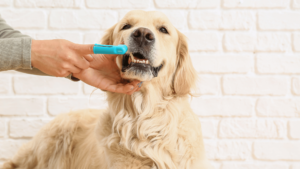
February Dental Month for Dogs:
February Dental Month for Dogs: Why Dental Care Matters February is Dog Dental Month! This month, let’s focus on how to maintain our dog’s dental health effectively. Here are ways to ensure their oral hygiene and how we can help. Importance of Dental Care Maintaining good dental health is crucial as dental diseases are among the most common health problems for dogs. Regular dental care helps to: Prevent Bad Breath: A sign that dental issues may be present. Avoid Pain and Discomfort: Healthy teeth can enhance your dog’s quality of life. Overall Wellness: Poor dental hygiene can lead to serious health issues beyond the mouth. Signs Your Dog May Need Dental

How to Trim Cat Nails: Step-by-Step Guide
How to Trim Cat Nails: Step-by-Step Guide Trimming your cat’s nails can be a straightforward task when you have the right equipment, a little patience, and plenty of treats. In this article, we will provide you with comprehensive tips and a step-by-step guide to ensure that your cat’s nail trimming experience is as smooth and stress-free as possible. How Often Should You Trim Your Cat’s Nails? The frequency of nail trimming depends on your cat’s lifestyle and environment. Generally, it’s advisable to clip your cat’s claws every three to four weeks to prevent them from becoming too long. If your cat has access to scratching posts or natural surfaces, like
